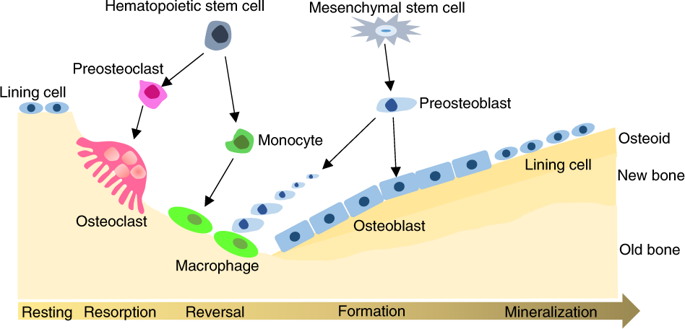Bone Research ( IF 14.3 ) Pub Date : 2019-07-08 , DOI: 10.1038/s41413-019-0059-6 Jian Luo , Peng Sun , Stefan Siwko , Mingyao Liu , Jianru Xiao

|
The superfamily of G protein-coupled receptors (GPCRs) contains immense structural and functional diversity and mediates a myriad of biological processes upon activation by various extracellular signals. Critical roles of GPCRs have been established in bone development, remodeling, and disease. Multiple human GPCR mutations impair bone development or metabolism, resulting in osteopathologies. Here we summarize the disease phenotypes and dysfunctions caused by GPCR gene mutations in humans as well as by deletion in animals. To date, 92 receptors (5 glutamate family, 67 rhodopsin family, 5 adhesion, 4 frizzled/taste2 family, 5 secretin family, and 6 other 7TM receptors) have been associated with bone diseases and dysfunctions (36 in humans and 72 in animals). By analyzing data from these 92 GPCRs, we found that mutation or deletion of different individual GPCRs could induce similar bone diseases or dysfunctions, and the same individual GPCR mutation or deletion could induce different bone diseases or dysfunctions in different populations or animal models. Data from human diseases or dysfunctions identified 19 genes whose mutation was associated with human BMD: 9 genes each for human height and osteoporosis; 4 genes each for human osteoarthritis (OA) and fracture risk; and 2 genes each for adolescent idiopathic scoliosis (AIS), periodontitis, osteosarcoma growth, and tooth development. Reports from gene knockout animals found 40 GPCRs whose deficiency reduced bone mass, while deficiency of 22 GPCRs increased bone mass and BMD; deficiency of 8 GPCRs reduced body length, while 5 mice had reduced femur size upon GPCR deletion. Furthermore, deficiency in 6 GPCRs induced osteoporosis; 4 induced osteoarthritis; 3 delayed fracture healing; 3 reduced arthritis severity; and reduced bone strength, increased bone strength, and increased cortical thickness were each observed in 2 GPCR-deficiency models. The ever-expanding number of GPCR mutation-associated diseases warrants accelerated molecular analysis, population studies, and investigation of phenotype correlation with SNPs to elucidate GPCR function in human diseases.
中文翻译:

GPCR在骨骼疾病和功能障碍中的作用
G蛋白偶联受体(GPCR)的超家族包含巨大的结构和功能多样性,并在通过各种细胞外信号激活后介导无数的生物学过程。GPCR在骨骼发育,重塑和疾病中的关键作用已经确立。多种人类GPCR突变会损害骨骼发育或新陈代谢,从而导致骨病。在这里,我们总结了由人类中的GPCR基因突变以及动物中的缺失引起的疾病表型和功能障碍。迄今为止,已将92种受体(5种谷氨酸家族,67种视紫红质家族,5种黏附,4种卷曲/味觉2家族,5种促胰液素家族和6种其他7TM受体)与骨疾病和功能障碍相关联(人类为36种,动物为72种)。 。通过分析来自这92个GPCR的数据,我们发现,不同个体GPCR的突变或缺失可以诱导相似的骨疾病或功能障碍,而同一个体GPCR的突变或缺失可以在不同的种群或动物模型中诱导不同的骨疾病或功能障碍。来自人类疾病或功能障碍的数据确定了19个基因突变与人类BMD相关:其中9个基因分别与人的身高和骨质疏松症有关。人类骨关节炎(OA)和骨折风险各有4个基因;和2个基因分别用于青少年特发性脊柱侧凸(AIS),牙周炎,骨肉瘤生长和牙齿发育。基因敲除动物的报告发现40个GPCR缺乏会降低骨量,而22个GPCR缺乏会增加骨量和BMD。缺乏8个GPCR会减少体长,而5个小鼠在删除GPCR后会减少股骨大小。此外,6项GPCR缺乏导致骨质疏松;4诱发骨关节炎;3延迟骨折愈合;3降低关节炎的严重程度;在2个GPCR缺陷模型中分别观察到骨强度降低,骨强度降低,骨强度增加和皮质厚度增加。GPCR突变相关疾病的数量不断增加,因此有必要进行加速的分子分析,人群研究以及与SNP的表型相关性研究,以阐明GPCR在人类疾病中的功能。











































 京公网安备 11010802027423号
京公网安备 11010802027423号